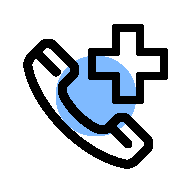Coarctation of the aorta repair
Finding out that your baby has a heart defect such as a Coarctation of the aorta repair a lot of concerns and questions and you may have learned that your baby would be born with this condition from a prenatal ultrasound or the doctor saw signs of it while your baby was in the nursery after birth. Either way, you're wondering what it means for your child, and what to do next. At operazi, congenital heart surgeons are experts in treating children with aortic stenosis, including those with hypoplastic aorta, and operazi offers an installment service for cardiovascular patients.
What is aortic stenosis?
● Aortic stenosis is a congenital (present at birth) heart defect that involves narrowing of the aorta. The aorta is the large artery that carries oxygen-rich (red) blood from the left ventricle to the body.
● It is shaped like a candy cane, with the first section moving upward toward the head (ascending aorta), and then bending in a C-shape where the smaller arteries connected. After bending, the aorta becomes straight again, and moves down toward the abdomen, carrying blood to the lower part of the body (descending aorta).
● The narrowed segment can occur anywhere in the aorta, but is most likely to occur in the segment immediately following the aortic arch.
● This narrowing prevents the amount of oxygen-rich blood from reaching the body's tissues.
● The more severe the stenosis, the more symptoms the child will have, and the earlier the problem is noticed.
● In some cases, the stenosis is noticed in childhood however, in other cases, it may not be noticed until school age or adolescence.
● About a third of children with aortic stenosis also have a bicuspid aortic valve - a valve with two leaflets instead of the usual three.
● Aortic stenosis occurs in a small percentage of children with congenital heart disease, and boys suffer from this defect twice as much as girls.
See also: Temporary cardiac pacing
Why is narrowing a concern?
Aortic stenosis causes several problems, including the following:
● The left ventricle has to work harder to try to move blood through the narrowed part of the aorta. Eventually, the left ventricle can no longer handle the extra workload, and fails to pump blood out to the body efficiently.
● Older children may have headaches due to excessive pressure in the blood vessels in the head, or cramps in the legs or abdomen due to the lack of blood flow in that area. Also, the kidneys may not excrete enough urine because they require a certain amount of blood flow and a certain blood pressure to perform this task.
● The walls of the ascending aorta, the aortic arch, or any of the arteries in the head and arms may weaken due to high pressure, and spontaneous ruptures can occur in any of these arteries, which may cause a stroke or uncontrollable bleeding.
What are the symptoms of aortic stenosis?
Before learning how to Coarctation of the aorta repair, here are the most common symptoms of aortic stenosis. However, every child may have different symptoms. Symptoms may include:
● irritability.
● Pale skin.
● sweating.
● Heavy and/or rapid breathing.
● poor nutrition.
● Weak weight gain.
● Cold feet and/or legs.
● Lack or absence of pulses in the feet.
● The blood pressure in the arms is much greater than the blood pressure in the legs.
Mild narrowing may not cause symptoms at all. Often, a school-aged child or teen will simply be noticed with high blood pressure or a heart murmur on a physical exam. Some may complain of headaches or cramps in the lower parts of the body.
How is aortic stenosis diagnosed?
Your child's doctor may have heard a heart murmur during the physical exam, and referred your child to a pediatric cardiologist for diagnosis. A heart murmur is simply a noise caused by the disruption of blood flow through the blockage in the part of the aortic stenosis and the symptoms your child displays will also help with the diagnosis.
The cardiologist will perform a physical exam, listen to your child's heart and lungs, and make other observations to help diagnose.
The loudness and quality of the murmur (stiff, murmur, etc.) as well as the location within the chest where the murmur is best heard will give the cardiologist an initial idea of what heart problem your child may have.
Diagnostic tests for congenital heart disease are determined by the child's age and clinical condition. Among these tests are the following:
● Chest X-ray. A diagnostic test that uses invisible X-ray energy beams to produce images of internal tissues, bones, and organs on film. Learn more about X-rays.
● Electrocardiogram (ECG or EKG). A test that records the electrical activity of the heart, shows abnormal rhythms (arrhythmias) and detects damage to the heart muscle. Learn more about the electrocardiogram.
● Echocardiogram: A procedure that evaluates the structure and function of the heart using sound waves recorded on an electronic sensor that produces a moving image of the heart and heart valves. The vast majority of aortic stenosis is diagnosed by echocardiography. Learn more about echocardiograms.
● Magnetic resonance imaging (MRI): A diagnostic procedure that uses a combination of large magnets, radio frequencies, and a computer to produce detailed images of organs and structures inside the body.
See also: Closed heart Surgery
How is Coarctation of the aorta repair?
Your child's doctor will determine the specific treatment for the stenosis Aorta based on:
· The child's age, general health and medical history.
· Extent of disease spread.
· The child's tolerance to certain medications, procedures, or treatments.
· Forecast for path defect.
· Family opinion or preference.
Coarctation of the aorta repair by repairing a narrowed blood vessel. Currently available techniques include:
First: Interventional Cardiac Catheterization:
● Cardiac catheterization may also be a treatment option.
● During the procedure, the child is sedated and a small, thin, flexible tube (catheter) is inserted into a blood vessel in the groin and guided into the heart.
● Once the catheter is inserted into the heart, the cardiologist will pass an inflated balloon through the narrowed part of the aorta to stretch it. A small device called a stent can also be placed in the narrowed area after the balloon is dilated to keep the aorta open.
● Overnight observation in hospital may be required.
Second: Surgical repair:
● Your child's aortic stenosis can be surgically Coarctation of the aorta repair in the operating room.
● Surgical repair is done under general anaesthesia.
● The narrowed area is surgically removed or enlarged with the help of surrounding structures or a patch.
● Some children will be very sick and need care in a cardiovascular intensive care unit (CVICU) before the procedure.
● Some children may need urgent repair of the stricture, while others with few symptoms will have scheduled repair on a less urgent basis.
After surgery or catheterization, children will return to the hospital's pediatric intensive care unit to be closely monitored during recovery and while your child is in the pediatric intensive care unit.
.







00 Comments